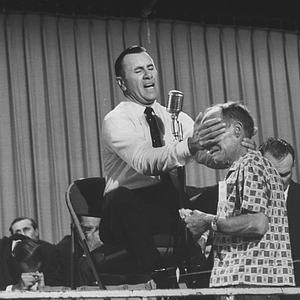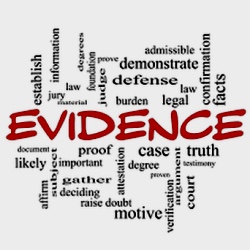It must be stressed that any document that has consequences as permanent and far-reaching as a Will can never be “simple.”
Even a straightforward Will can be fraught with drafting problems and potential liability.
A Will speaks from death and cannot be altered after death. Thus Wills can be viewed as potential
“time bombs” of liability. Although sections 58 and 59 of the Wills, Estates and Succession Act now allow an opportunity to correct errors, to confirm what the testator really meant, to fill in the gaps, or to modify the ambiguous, a small drafting error can create an ambiguity that may take years to resolve in the Courts.
A Will is a very personal document, quite literally, a testator’s last word about how his or her
estate is to be disposed of. The only constraints on the testator’s wishes are public policy and the law. If neitheris contravened, the testator can make almost any type of Will.
Duties of the Wills-Drafter
The Wills practitioner has several important duties, including the following.
1. Spending sufficient time to properly canvass with the client his or her instructions, and then understanding those instructions precisely after giving appropriate advice with respect to same
2. Translating the instructions into testamentary provisions that are valid and clearly express the testator’s intentions
3. Gathering all the information required to properly prepare the Will and to give effect to the testator’s wishes
4. Taking into account other documents to which the testator is a party, such as those dealing with assets that pass outside of the estate, and applying legal principles that may affect the provisions of the Will
Simply put, it is the Wills practitioner’s duty to ask the right questions and draft the Will properly in accordance with the client’s instructions.
Fees
1. Fees should be based on the practitioner’s actual time and not the supposed “going rate.”
2. The practitioner should explain to the client the amount of time it properly takes to prepare a Will, the amount of expertise required for same, the risk of liability, and the value of the assets that are being dealt. That will help persuade the client that the cost may be higher than he or she wishes to pay, but that it is still good value in the “big picture” of things. It should be stressed that the Will is dealing with the client’s lifetime accumulated assets.
3. If the client is unwilling to pay, then it is open to the practitioner to refuse to do the work.
4. If the practitioner accepts the work, he or she accepts the responsibility of doing it properly and promptly.
Getting the Necessary Information From The Client
Clients frequently attend at the Will- drafter’s office with firm instructions about how they want to dispose of their estates. It is the Will-drafter’s duty to properly examine and scrutinize such instructions because many of them may be neither practical nor advantageous to the interest of the estate or to the beneficiaries. The Will-drafter must educate the client and explain to him or her the nature and consequences of the proposed testamentary provisions.
It is not uncommon for the client’s initial instructions to be flawed. Clients often have firm opinions as to what they want to achieve with their Will that are often simply not practical, or even possible, and would almost certainly end in litigation. It is the job of the drafting practitioner to provide proper objective counsel in this regard.
To get the correct information, the practitioner must ask the right questions. The Will practitioner can simply never have too much information to give proper advice.
The bottom line is there is a duty on the Will-drafter to carry out the client’s instructions as closely as possible, but there is an equally important duty to make sure that clients understand they should not necessarily do what they want to do, and if they insist after proper advice, they must accept and approve the consequences.
Probing the Client’s Mind
I would be remiss in any discussion regarding the taking of Will instructions, especially from the elderly and frail, not to start with a wise quote from Chalmers v. Uzelac 2004 BCCA 533.
1. Every solicitor who, as part of his or her practice draws Wills, should read, mark and inwardly digest at least once each year the judgment of Sir John Alexander Boyd, C. in Murphy v. Lamphier (1914), 31 O.L.R. 287, the Canadian locus classicus on a solicitor’s duty in taking instructions, especially at pages 318-321.
2. That duty is owed not only to those who might, or ought to be, objects of the testator’s bounty but also to the testator, for only the solicitor can be the testator’s voice from the grave; the solicitor discharges that duty by making proper inquiries of the testator at the time of the making of the will and by taking and preserving proper notes of the responses and of any observations relevant both to capacity and to knowledge and approval of the contents of the will. The reason for the latter obligation ought to be obvious but, lest it is not, I state it: How can a judge put confidence in the testimony of a solicitor who says, years (here 9) after taking instructions, but keeping no notes of those instructions, that the testator said this or that as the reason for changing an earlier will?
In Murphy v. Lamphier, as cited in the Chalmers case, the duty of a lawyer taking Will instructions was discussed as follows.
It is an error to suppose that, because a person can understand a question put to him and give a rational answer, he is of sound mind and capable of making a Will: the competency of the mind must be judged by the nature of the act to be done, and from a consideration of all the circumstances of the case.
The grand criterion by which to judge, whether the mind is injured or destroyed, is to ascertain the state of the memory. Memory affords all the materials on which to exercise judgment and to arrive at a conclusion or resolution.
In the case of a person enfeebled by old age or with faculties impaired by disease, and particularly in the case of one labouring under both disabilities, a solicitor called in to prepare a Will does not discharge his duty by simply taking down and giving expression to the words of the client, without being satisfied by all available means that testable capacity exists and is being freely and intelligently exercised in the disposition of the property; and, in dealing with a person needing protection and advice, it is important for the solicitor to find out if there be a former Will, and its nature, with a view of getting at the reasons for any variations or changes therefrom, if such changes be contemplated.
The notes of haste, stealth, and contrivance attached to this transaction, and were not removed by the evidence.
The duty was similarly described by Kroft J. in Friesen v. Friesen Estate (1985) 33 Man.R. (2d) (Q.B.) at para 77, as follows.
6. The duty upon a solicitor taking instructions for a Will is always a heavy one. When the client is weak and ill, and particularly when the solicitor knows that he is revoking an existing Will, the responsibility will be particularly onerous.
7. A solicitor cannot discharge his duty by asking perfunctory questions, getting apparently rational answers, and then simply recording in legal form the words expressed by the client. He must first satisfy himself by a personal inquiry that true testamentary capacity exists, that the instructions are freely given, and that the effect of the Will is understood.
Sample Organizational Chart for a Will
One tried-and-true technique of Will-drafting is to break the Will down into its basic components, to demystify the task at hand. Here is a sample of how most Wills can be broken down.
Part One: Initial Matters
(A) Revocation of prior Wills
(B) Appointment of executor and trustee
(C) Appointment of alternate executor and trustee
(D) Appointment of guardian, if applicable
Part Two: Disposition of Estate
(A) Vest property in trustee
(B) Payment of debts, testamentary expenses
(C) Disposition to beneficiaries
(a) Specific bequests
(b) Legacies
(c) Residue
(d) Alternative gift(s) of residue
Part Three: Administration of Estate
Powers of Executor/Trustee
(1) Power of sale or conversion
(2) Trust for minors
(3) Payment for minors
(4) Investment powers
(5) Power of distribution in specie
(6) Power to carry on business and other powers that may be necessary or appropriate
Part Four: Closing Matters
Miscellaneous provisions, for example
(1) Charging clause
(2) Funeral wishes
Remember that the client must “know and approve the contents” of the Will. So that can be achieved, 5. the goal should be to draft a Will the client may read and understand for him or herself. The use of a logical arrangement of paragraphs and clauses such as displayed in the above-noted organizational chart will assist the client in that endeavour. The use of headings and definitions and the numbering of paragraphs and clauses will also assist in that regard. Bearing 6. in mind the aging population, using a reasonably large font is advisable.
It should be noted that words used in a Will are given their ordinary meaning by the Courts. Also, a judge should consider only the Will and the facts and circumstances known to the client at the time the Will was made to determine the client’s testamentary wishes.
Style of Drafting: 20 Dos and Don’ts
1. Strive for simplicity without sacrificing precision.
2. Be brief without sacrificing comprehensiveness.
3. Be consistent in the use of tense and the use of terms. All of the clauses to be used must then be looked at together to ensure a uniform drafting style throughout. The Will created must not look like a patchwork quilt of style and language as this could lead to interpretation problems and possible negligence claims.
4. Use modern plain language rather than verbose and archaic expressions. For many years now, there has been a movement toward the use of plain language to replace legalese and bureaucratic writing. Plain language is straightforward prose, carefully written with the needs of its primary readers in mind. Strive to make your average sentence length shorter and to simplify your sentence structure.
5. Eliminate redundant words and phrases. Will-draftspersons have the tendency to use couplets and triplets when one word carries the intended meaning. For example the words “nominate, constitute, and appoint” could be condensed to simply “appoint.” The words “give, devise, and bequeath” could be shortened to simply “give.”
6. Strive to not use foreign words in Wills unless you are referring to foreign places or persons. For example, do not use Latin phrases such as “bona fide” when the English “good faith” conveys the same meaning. Similarly, do not use expressions such as “cy-pres” or “en ventre sa mere,” when they can be replaced with “as near as possible” and “in its mother’s womb.”
7. Do not use the word “issue” that ordinarily means all of a person’s lineal descendants, but instead use the words “child,” “children,” “grandchild,” and/or “grandchildren,” as appropriate. Similarly, do not use the words “per stirpes” or “per capita” but instead describe the method of distribution.
I once litigated the following clause from a Will that used the word “issue.”
To divide the residue of my estate between my daughters Mary and Joan who survive me in equal shares per capita but if any child of mine predeceases me leaving issue him or her surviving, the issue of that deceased child surviving me shall take (and if more than one in equal shares per stripes as tenants in common) the share which his or her or their parent would have taken if living.
The deceased had a son who had predeceased him by 10 years leaving two children. At the time the deceased executed his Will, he had only the two daughters Mary and Joan. The Will was poorly drafted in that it used both the words “any child of mine” as well as the words “leaving issue him or her surviving.” I argued that the issue of the deceased son, namely the deceased son’s children and grandchildren, should share equally in the estate with Mary and Joan.
Leaving aside the poor draftsmanship that resulted in the litigation, I have never yet met a client who wishes to provide for all of his or her lineal descendants. Clients usually wish to provide only for their children, but if a child has predeceased, leaving children of his or her own, then for those children, that is the grandchildren of the client, in the place of the deceased child.
8. Do not do a codicil to revise an existing Will, as it is too easy to make a mistake. Disregard the client’s concerns about costs in this regard. If the client wants to make a change to a Will, then draw a new Will.
9. When providing for the distribution of the estate residue, try to use percentages or shares rather than specific amounts. Then add the percentages or shares several times to ensure they add up to 100 per cent. In Sarkin v. Sarkin Estate, 36 E.T.R.139, the draftsperson did use shares, but the shares added up to only 55 per cent of the residue. As a result, the remaining 45 per cent went by way of a partial intestacy.
10. Do not use precatory words such as “wish” or “request,” as they are not binding on the executor.
11. Be precise in your description of assets to avoid ambiguities.
12. Check carefully for inconsistent clauses.
13. Check to see that no intestacy or partial intestacy has been created. I once litigated a homemade Will where the testatrix included a specific clause stating she did not wish her brother to ever share in her estate by reason of bad past behaviour. She executed the Will without having included a residual beneficiary clause and thus created a partial intestacy. The effect was that her next-of-kin, namely, her brother, inherited.
14. Sufficiently identify each beneficiary and record his or her contact information. Charities can be a particular problem, as it is necessary to understand the structure of the charity and to ascertain which part of the charity the testator wishes to benefit, as well as to ensure the charity’s name is stated correctly. If possible, the charity should be contacted to ensure accuracy. Leaving a bequest to “charitable and educational institutions” will undoubtedly lead to much litigation among various charities and education institutions.
15. Be consistent in the words you use.
16. Try not to include a gift of a specific parcel of property to a beneficiary as there is a good likelihood the testator will not own the property at the time of his or her death. A better way to accomplish such an intention is to use a clause such as “to transfer to Mary, if she survives me, whatever house and property I own at the time of my death,” or such similar-type wording.
17. Only attempt to do the type of Wills with which you are completely experienced and are totally comfortable doing.
18. Review the Will clause by clause very carefully with the client. It should never be a cursory review. It may be helpful to paraphrase each clause to the client in simple terms, as many clients will not really understand what most of the clauses mean. It is suggested that where possible and practical, email, fax, or mail a copy of the Will to the client to review prior to seeing him or her in your office. That will give the client time to consider and reflect on the Will and to make any changes he or she considers appropriate. That is preferable to the client attending at your office and requesting changes to be made on the spot, as such changes are often rushed.
19. Use technology but beware that it sometimes does strange things, like leave out paragraphs and make other such unexplained mistakes.
20. Do not rely solely on a checklist- type Will instruction sheet. Make real notes, including observations confirming you probed the Will- maker’s mind to check for mental capacity and noted his or her statements as to next-of-kin and the value of assets. On completing a Wills file, avoid using a form reporting letter that has clauses that do not relate to the particular instructions.
Conclusion
I again stress there is no such thing as a simple Will. While a Wills practice can be enjoyable and rewarding, the draftsperson can never let his or her guard down for one instant regarding the myriad potential problems that can arise in this type of practice.
The client needs firm advice and guidance throughout the taking of instructions and again during the review of the Will at the time of execution.
This article was originally published by The Scrivener Volume 27 Number 4 Winter 2018.










